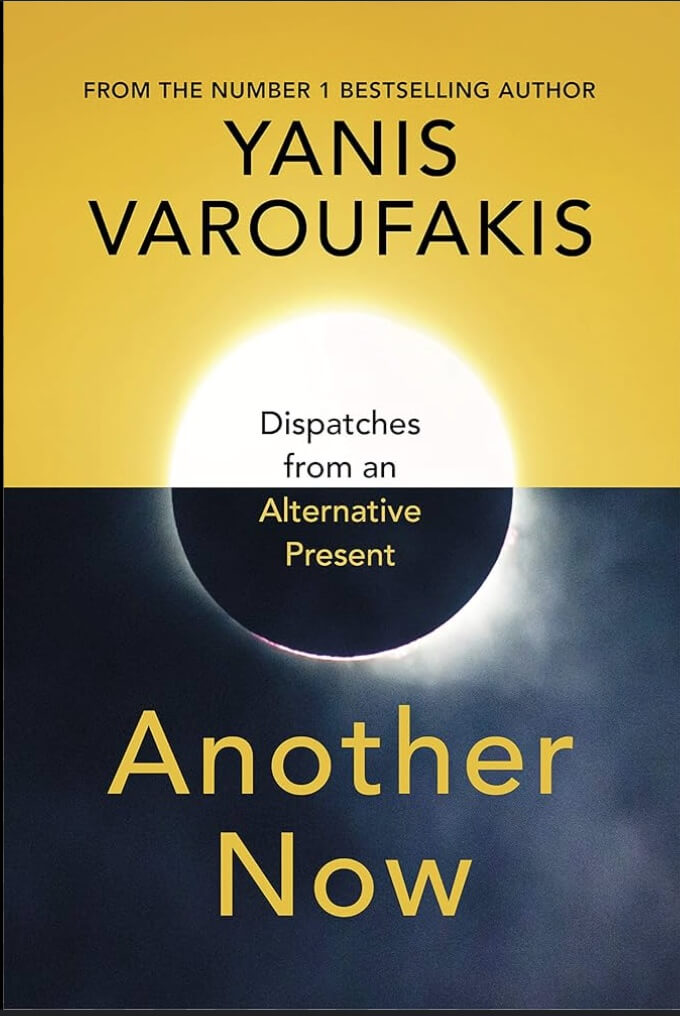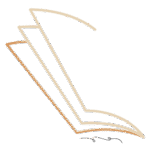As DIY investors, we spend a lot of time learning how this economy works: supply and demand, interest rates, quarterly earnings, market sentiment. But what if the system we invest in isn’t the only possible system? Or even the best one? In Another Now, economist and former Greek finance minister Yanis Varoufakis invites us to imagine a different kind of capitalism — or rather, a world beyond capitalism.
Part novel, part manifesto, Another Now is unlike any economics book you’ve read. It’s a work of speculative fiction where economists, activists, and technologists debate — and build — an alternative system. And while it may sound abstract, the questions it raises are deeply relevant for anyone putting money into markets today.
💡 The Premise: A Parallel World, Born From Crisis
Set in a present-day “another now,” the story unfolds through dialogue between three characters:
⦁ Eva, a radical activist and ex-banker
⦁ Iris, a techno-savvy anarchist and AI ethicist
⦁ Kosta, a disillusioned economist (and stand-in for the author)
They’re not trying to predict the future — they’re looking back from an alternative present, one in which the 2008 financial crisis sparked real systemic change. Banks were democratized, corporations restructured, and digital platforms reclaimed by the public.
It’s a thought experiment: What if we had used the last crisis not to double down on the status quo, but to reimagine everything?
🏗️ What the New System Looks Like
Varoufakis proposes a radically different economic structure:
⦁ No Stock Market: Corporations are owned by workers, not shareholders.
⦁ Public Digital Currency: No private banking. People hold accounts directly with the central bank.
⦁ Universal Basic Dividend: Instead of taxing labor, wealth is shared through collectively owned capital assets.
⦁ Platform Commons: Tech infrastructure is owned by society, not monopolies.
For investors, these ideas are seismic. They challenge the basic mechanisms through which value is generated and distributed in today’s market economy.
📈 What DIY Investors Can Learn
⦁ Every Market Is Built on Assumptions
Investing relies on confidence in the current system. Varoufakis asks us to question the assumptions baked into that system — like the sanctity of shareholder primacy or the inevitability of wealth inequality. For DIY investors, this is a reminder that no market is “natural.”
⦁ Speculation vs. Value Creation
In Another Now, speculation disappears because there’s no stock market. All value creation happens through work and collective enterprise. Investors may scoff — but it raises a key question: How much of our current returns are based on real value, and how much on speculation, monopoly, or policy distortion?
⦁ Technology Doesn’t Just Change Products — It Changes Power
Blockchain, AI, and digital platforms aren’t neutral tools. In this imagined world, they’re used to increase transparency, eliminate rent extraction, and empower citizens. As tech investors, we should ask: Are we funding tools for empowerment — or for control?
⦁ Resilience Over Returns
Varoufakis’s vision emphasizes sustainability, participation, and resilience over profit maximization. For long-term investors, especially those focused on ESG or impact investing, this is more than theory — it’s a call to rethink what “success” means.
📚 The Format: Fiction as Framework
The story is told entirely through dialogue. It’s not a conventional novel — there’s no real plot, conflict, or character development. Instead, the characters argue, explain, and challenge each other over the course of philosophical and economic debates.
Some investors may find this tedious, but others will find it enlightening. It’s like reading a play co-written by Karl Marx and a Silicon Valley futurist — dense but deeply thought-provoking.
🔍 Criticisms and Caveats
⦁ It’s Idealistic: Some readers will dismiss the book as utopian or impractical. But that’s kind of the point — to imagine what could be, not just what is.
⦁ Lacks Implementation Details: You won’t find blueprints for policy reform here. It’s a sketch, not a roadmap.
⦁ Character-Driven Exposition: The characters exist mostly to represent ideas, not people. That may turn off readers who prefer narrative-driven fiction.
Still, for investors looking to think beyond market cycles and P/E ratios, these flaws are forgivable.
🌍 Why It Matters Now
In the wake of COVID-19, economic inequality, and environmental crisis, the world is already asking big questions. Governments are experimenting with a universal basic income. Central banks are issuing digital currencies. Activists are pushing to de-privatize essential platforms.
Another Now doesn’t predict these trends — it catalyzes them. For investors, it’s a rare book that doesn’t just challenge you to diversify your portfolio, but your imagination.
✅ Why DIY Investors Should Read This Book
⦁ It broadens your macroeconomic perspective
⦁ It challenges the ethics and assumptions behind investing
⦁ It provides a vision of what post-capitalist finance could look like
⦁ It helps contextualize ESG and stakeholder capitalism within a larger framework
💬 What Readers Are Saying
“Brilliant thought experiment.” — Readers appreciate the intellectual ambition.
“Dense but rewarding.” — Not a page-turner, but worth the effort.
“Changed how I think about value.” — Some investors found it led them to rethink their role in the economy.
📈 Final Verdict: ★★★★☆ (4.5/5)
Another Now is not for everyone. It’s dense, philosophical, and highly speculative. But for DIY investors who care about where the world is heading — and how capital can be used to shape it — this book is essential.
It won’t help you time the market. But it might help you understand what kind of market you should be building. And in an era of climate shocks, tech monopolies, and social unrest, that’s a question every serious investor should be asking.




